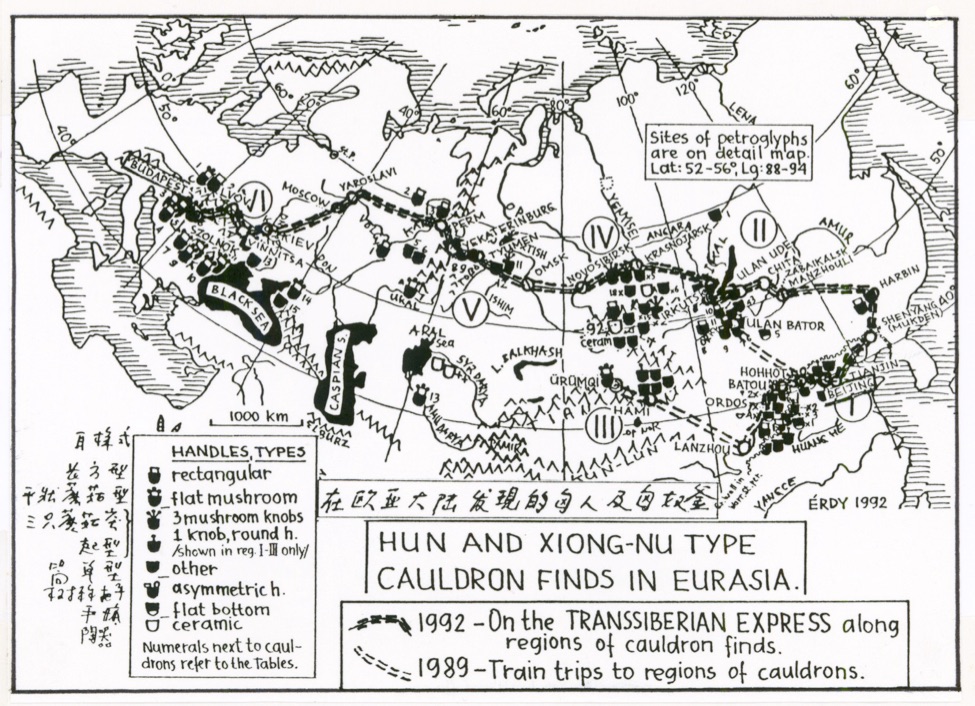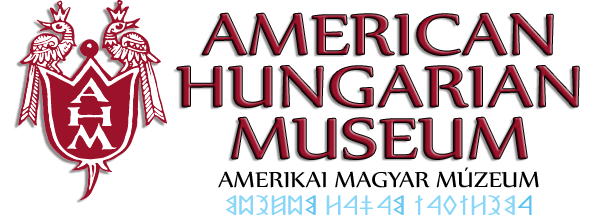On the Transsiberian Express from Beijing to Budapest
Following the Path of the Ancient Hun Bronze Cauldrons
In 1991, a lecture was presented by Dr. MIKLÓS ÉRDY on the gold treasure and the sacrificial bronze cauldrons of the Huns at the American Hungarian Museum. 1992 was an especially active year for him, having received four invitations to present his research results concerning the Huns, or Xiong-nu (their Chinese name). He spoke:
in March at the yearly meeting of the American Oriental Society in Cam bridge, MA, hosted by the Harvard University;
in April in Budapest, on the 150th anniversary of the death of Alexander Csoma de Körös, hosted by the Eötvös Loránd University;
in August at the International Archeological Conference on the Cultures of The Northern Chinese Ancient Nations in Hohhot, Inner Mongolia, China and finally in November at the Symposium of the 250 year old Oriental Institute of Naples, Italy.

Invitations for 1993 include presentations at the University of Bologna and its Ravenna Campus and in June at the meeting of the Permanent International Altaistic Conference in Alma-Ata, Kazahstan. The starting point of these lectures was his presentation at the Harvard University Faculty Club in April 1990 hosted by the Inner Asia Comity, discussing the archeological results collected during his 1989 expedition in Mongolia and Northern China, which was also presented at the American Hungarian Museum in 1991.
This lecture and the slides are the summary of his sixth field trip (Aug /Sept 1992) through the whole length of Central Eurasia. Dr. Érdy traveled on the Transsiberian Express through Manzhuria from Beijing to Budapest. The discussion of the landscape is combined with the Hunnic archeological finds. They may be of bronze, ceramics, or on petroglyphs, collected by Dr. Érdy. A comparative analysis of all such finds has been made available for scientific study for the first time.
The Hunnic type cauldrons have a unique, distinguishable decorative design, with characteristic handles and stands. Their height varies between 3 cm (Minusinsk) to 99 cm (Törtel, Hungary) depending whether they were found in graves or at sites of religious ceremonies.
The map and study of the cauldrons traversing Eurasia shed new light to dark phases of Hunnic history from the Ordos region to the Carpathian Basin, supplementing the written Chinese sources.
Dr. Miklós Érdy is continuing and widening his studies. He is using part of his income derived from dental medicine for his research, assuring flexibility and independence.

